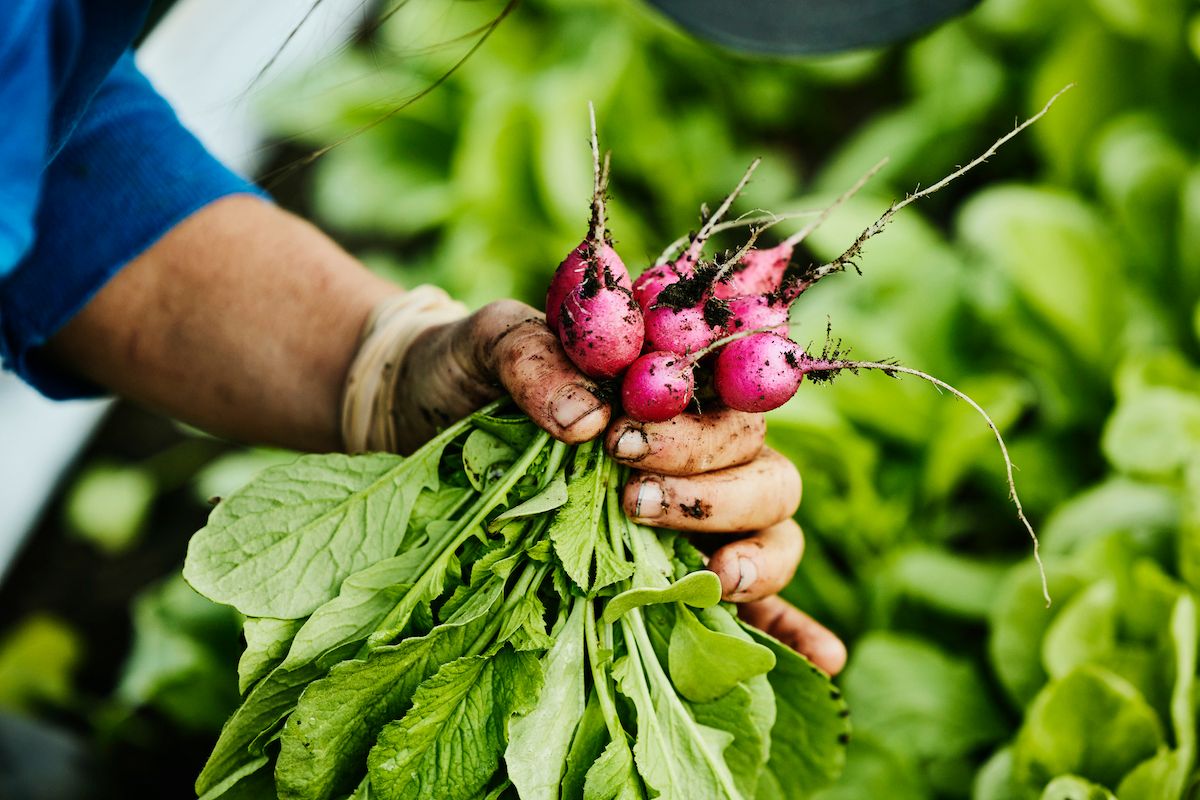Radishes get a lot of love for the wrong reasons.
Hear me out: the root vegetable, while revered for its colorful interior and satisfying crunch, is simply reduced to just its bulb. Arguably, the best (and most nutritious) part of radishes is their leafy greens, which are often discarded as scraps. That’s not to say we should stop eating radish bulbs — after all, they’re great in salads and sandwiches or raw, dipped in herb butter à la Ina Garten. But it’s time that radish leaves deserve their rightful praise.
Radish greens are a delicacy in Bengali cuisine. I grew up enjoying mulo shaak bhaja, or stir-fried radish greens, which is made with a medley of spices (fenugreek seeds, nigella seeds, cumin seeds, fennel seeds, wild celery seeds, turmeric powder and dry red chilies) along with mustard oil and sun-dried lentil dumplings. There’s also chingri diye mulo shaak, a non-vegetarian variation of the same dish that swaps out lentil dumplings for shrimp.
Greens of all radishes — whether that’s the classic Cherry Belle radish, Watermelon radish, Malaga radish or Daikon radish — are edible, although they may vary in taste, explained Richard LaMarita, chef-instructor of Plant-Based Culinary Arts at the Institute of Culinary Education’s New York City campus. For example, Cherry Belle radish greens have a mild, peppery zing to them, similar to arugula, while Daikon greens are slightly more bitter, especially in mature plants.
“When you buy different kinds of radishes, it’s important to taste the leaves,” LaMarita said. “Radish leaves are in the same family, but there will be some slight differences in flavor depending on the type of radish they belong to.”
Aside from their great taste, radish greens come with several nutritional benefits. Surprisingly, radish greens contain up to six times the Vitamin C of the actual bulbs themselves. The greens are also rich in Vitamin A, Vitamin B, Vitamin B6 and minerals, including magnesium, phosphorus, iron, calcium and potassium. That’s all to say that the greens are incredibly healthy, so please, don’t throw them out.
The beauty of radish greens is that they can be eaten raw or cooked. LaMarita recommended eating baby radish greens raw since they tend to have a less bitter flavor profile compared to mature radish greens, which are best served cooked. However, it all depends on individual taste preferences.
To prepare radish greens, cut off the leafy greens from the bulb using scissors or a knife, making sure to leave about a 1/2 inch of stem attached to the individual bulb. Then, rinse the greens thoroughly under cool water.
Per LaMarita, radish greens are best enjoyed raw in salads and mixed with fresh kale, watercress, arugula, parsley or baby greens. Because radish greens are delicate in texture, they pair well with similar-textured greens rather than firm greens, like iceberg lettuce or romaine. If you’re looking to go beyond a basic salad (although it must be said that it’s officially prime salad season), you can try whipping up a homemade pesto with radish greens, basil, cilantro or parsley. LaMarita recommended playing around with your radish greens and blending them with other leafy greens for a more vibrant and robust pesto.
As for cooking radish greens, they can be sautéed with garlic and shallots, LaMarita suggested. They can be eaten in a stir-fry with radish bulbs or with other leafy greens and served alongside rice. They can be mixed into soups and stews, like this recipe from David Lebovitz that also calls for leeks, Dijon mustard, olive oil, cayenne pepper and heavy cream (or sour cream, mascarpone or crème fraiche). They can also be added to an omelette or roasted on their own and finished with a drizzle of balsamic vinegar.
Additionally, chiffonade radish greens are a great garnish on top of baked fish or grilled chicken, LaMarita said.
So there you have it — radish greens are delicious, nourishing and versatile. Next time you pick up a bunch of radishes, be sure to save their leafy greens and savor them this spring.



Shares